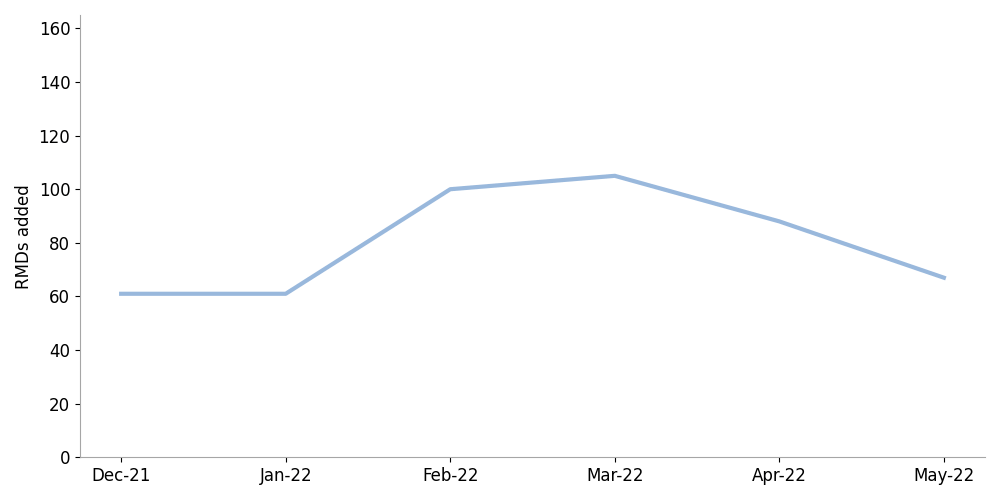Stronger robocall mitigation rules proposed
Stronger robocall mitigation requirements have been proposed before the FCC. These proposals would create stronger financial incentives for robocall mitigation along the call path. Let’s have a look.
Summary of proposed rules
These rules were proposed by the National Consumer Law Center in a meeting with FCC staff and in the notice of ex parte presentation that followed. Here’s a summarized list of the proposed rules:
- All providers in the call path must engage in effective mitigation against illegal robocalls.
- Clear financial consequences should apply to providers who transmit illegal robocalls. For example, providers could be held liable for fraud losses related to illegal robocalls they transmitted.
- The FCC should suspend providers from the Robocall Mitigation Database (RMD) to protect subscribers from receiving illegal robocalls.
- Tracebacks conducted by the ITG should be made public. The intent is to put pressure on providers that have been repeated recipients of tracebacks.
- The FCC should impose strict licensing and high bonding requirements for VoIP providers.
The NCLC proposals follow a series of similar suggestions to strengthen robocall mitigation rules. Here are a few examples:
- ZipDX also suggested that the economic drivers for robocalling must be changed for each provider along the call path.
- In their reply comments to new rules for gateway providers, USTelecom advocated that the FCC should require that all providers submit certifications in the RMD and implement a robocall mitigation program.
- Verizon also advocated that all providers that handle calls with U.S. calling numbers should perform robocall mitigation and register in the RMD.
- The FCC proposed new rules for STIR/SHAKEN and robocall mitigation on May 19, 2022, including extending certain mitigation duties to all domestic providers, stronger enforcement fines and removal of RMD filings for violators.
The NCLC proposal seems stronger than these previous proposals:
- The potential liability for fraud losses stemming from robocalls would be a powerful incentive for robocall mitigation.
- Public traceback reports would motivate providers to proactively mitigate illegal robocall traffic.
- The licensing and surety bond requirements provide an upfront deterrent to transmitting illegal robocalls.
Our thoughts
We support the intent behind these proposals: use financial leverage and consequences to incentivize robocall mitigation and make transmission of illegal robocalls too risky for providers that want to stay out of trouble.
We strongly support the first two proposals: all providers use effective robocall mitigation and financial consequences for transmitting illegal robocalls. Industry participants might disagree and debate the precise details of these proposals, but the general idea seems essential for success.
The third proposal, suspension from the RMD, seems like a good idea at first. However, there’s an elephant in the room, and nobody is talking about it: Are providers really checking for RMD filings by their upstream providers?
“Of course they are,” you say. “It’s in the rules.”
Yeah, right. But are downstream providers following this rule?
Let’s have a look at monthly RMD filings over the past six months:

Figure 1: New RMD Filings per Month December 2021 Through May 2022
Figure 1 shows new RMD filings per month from December 2021 through May 2022. The average is about 80 per month, with a low of 61 and a high of 105.
The rules require downstream providers to refuse calls from unregistered upstream providers. This rule went into effect September 28, 2021. This raises some obvious questions:
- Are these new providers? If not, what were these RMD filers doing since September 28, 2021?
- Are these new RMDs to replace older filings? (A filer can update an existing filing, but some providers create a new filing and leave the old one on file.)
- Reviewing the details, we see filings from some filers that have been in business awhile and do not have previous filings in the RMD. How were they able to send calls before they filed?
We suspect that some downstream providers are neither checking the RMD nor refusing calls from unregistered upstream providers. So, what difference would it make if the FCC suspends an RMD filing? This rule seems to be suffering from a lack of compliance, oversight and enforcement. Unless this changes, the proposal to suspend RMD filings won’t make much difference.
The proposal for public traceback reporting seems a good idea. There should be further discussion of ways to make such reporting efficient and useful without imposing unrealistic requirements.
The proposal for strict licensing and bonding requirements requires careful consideration. The process should be fair and support a competitive marketplace without imposing undue barriers to entry. However, once a provider has demonstrated an apparent willingness or indifference for transmitting illegal robocalls, things should get tough, after a fair review process. The proposal hints at this innocent-until-proven-guilty approach, but we think it bears emphasis.

TransNexus solutions
TransNexus is a leader in developing innovative software to manage and protect telecommunications networks. The company has over 20 years’ experience in providing telecom software solutions including toll fraud prevention, robocall mitigation and prevention, TDoS prevention, analytics, routing, billing support, STIR/SHAKEN and SHAKEN certificate services.
Contact us today to learn more.
TransNexus has a comprehensive suite of robocall mitigation solutions to prevent the origination of unlawful robocalls.
Learn more about robocall mitigation